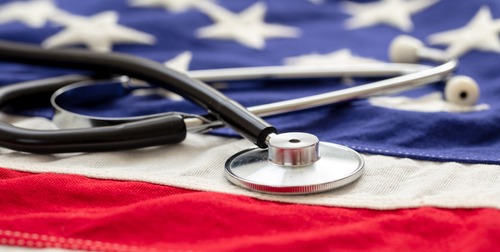
By measuring states’ current emergency readiness levels and data on weather-related disasters, vaccinations, and more, a new report from the nonprofit health policy organization Trust for America’s Health made a case for strengthening public health preparedness.
Of the greatest concerns to the report’s authors was that during the 2021-2022 flu season, only 51 percent of Americans at least six months old received a flu vaccine. That is despite significant upward trending improvements to flu vaccination rates in recent years and significantly short of a 70 percent goal. Additionally, only half of the U.S. population is even serviced by a comprehensive public health system capable of offering necessary health services to all, and only 26 percent of hospitals on average received top performance marks for safety, raising the issue of healthcare-affiliated infection rates, intensive care capacity and a weakening effort to prevent errors.
Backed by the fact that more than 1 million people died due to COVID-19 in the United States, and the rising scope of health misinformation, it paints a troubling portrait of national health.
“Increased and sustained investment in public health infrastructure, emergency preparedness, and health equity will save lives,” Dr. J. Nadine Gracia, president and CEO of Trust for America’s Health, said. “Federal, state, and local officials, as well as leaders in the healthcare and business sectors, should use our findings to identify and address gaps in public health preparedness. Neglecting to do so will mean that the country will not be as prepared as it needs to be for the next public health emergency.”
Among the report’s recommendations were for federal and state action to modernize public health infrastructure and invest $4.5 billion annually into foundational public health capabilities. It urged efforts to rebuild trust in public health agencies and leaders, counter misinformation, and build up actual countermeasure infrastructure, including distribution and dispensing.
Antibiotic-resistant infections remain a major concern, and the report’s authors pushed for incentives for new products to fight them. Vaccination exemptions for school children should be minimized, the report added and job-protected paid leave for illness or family caregiving should be enshrined at the federal and state levels. What’s more: much of public health could be improved by investing in underlying social issues, such as housing, transportation, and healthy food access, along with preparations for ongoing climate change.
Notably, the report also ranked states (and the District of Columbia) based on their performance levels for health emergency preparedness. Of these, 19 states and D.C. fared the best, including Colorado, North Carolina, Pennsylvania, and Wisconsin, to name a few. The middle tier consisted of 16 states, including Arkansas, California, New York, and Texas. At the bottom of the pack were 15 states, including Arizona, Hawaii, Michigan, South Dakota, and more.




